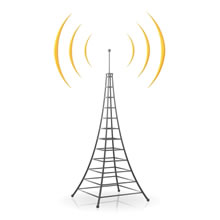 A common concern when you are considering a wireless speaker solution is how to deal with interference. The last thing you want to experience is loss of signal, hissing, or popping. Most wireless speaker systems make use of either the 900MHz band or the 2.4 GHz band. Interference happens because there are many devices that operate at these frequencies. A majority of home wireless networks operate at 2.4GHz, many baby monitors, and the last two generations of cordless phones typically are either 900MHz or 2.4GHz. The newest generation of cordless phones are the 5.8 GHz variety. Many people don’t realize that even a microwave oven can cause interference for devices that use 2.4 GHz.
A common concern when you are considering a wireless speaker solution is how to deal with interference. The last thing you want to experience is loss of signal, hissing, or popping. Most wireless speaker systems make use of either the 900MHz band or the 2.4 GHz band. Interference happens because there are many devices that operate at these frequencies. A majority of home wireless networks operate at 2.4GHz, many baby monitors, and the last two generations of cordless phones typically are either 900MHz or 2.4GHz. The newest generation of cordless phones are the 5.8 GHz variety. Many people don’t realize that even a microwave oven can cause interference for devices that use 2.4 GHz.
Sometimes the radio interference involving your wireless speakers won’t impact your listening experience. The speakers may instead cause intermittent problems with your wireless network connectivity instead. Occasionally the interference is so sporadic that it makes it hard to determine what device it is that is causing problems with your wireless speakers. It could be as simple as a Bluetooth headset that someone in the house uses with their phone occasionally and at that point you start to get symptoms of interference without knowing what the problem is.
So how can you deal with interference? Most wireless speaker systems sync up automatically but also provide a manual “channel” selection option in case you are getting interference from a device in your home. This is the first and often the most effective option for you to clear up any interference problems. It is also possible that the device that is interfering with your speakers has a channel select option as well and you can make adjustments to that setting to resolve the issue. Most wireless routers support this option. If this doesn’t work then you are going to need to try to determine what device in your home is interfering with your speakers. Once you know the device, you can try to relocate the transmitter for your speakers away from the offending device if it is possible. Sometimes simply repositioning the devices so that they are not in close proximity is all that is necessary to clear up the issue. Finally, the most frequent offender outside of wireless networks is cordless phones and since they are available in a wide range of frequencies you might find that it is much simpler to just change the type of cordless phone system you use. In particular many 2.4 GHz phones use “spread spectrum” technology which continually changes the channel the phone is using and if this is the case there is no way to prevent it from stepping on the channel that your wireless speakers are using. It might be best in this case to move up to one of the 5.8 GHz phones.